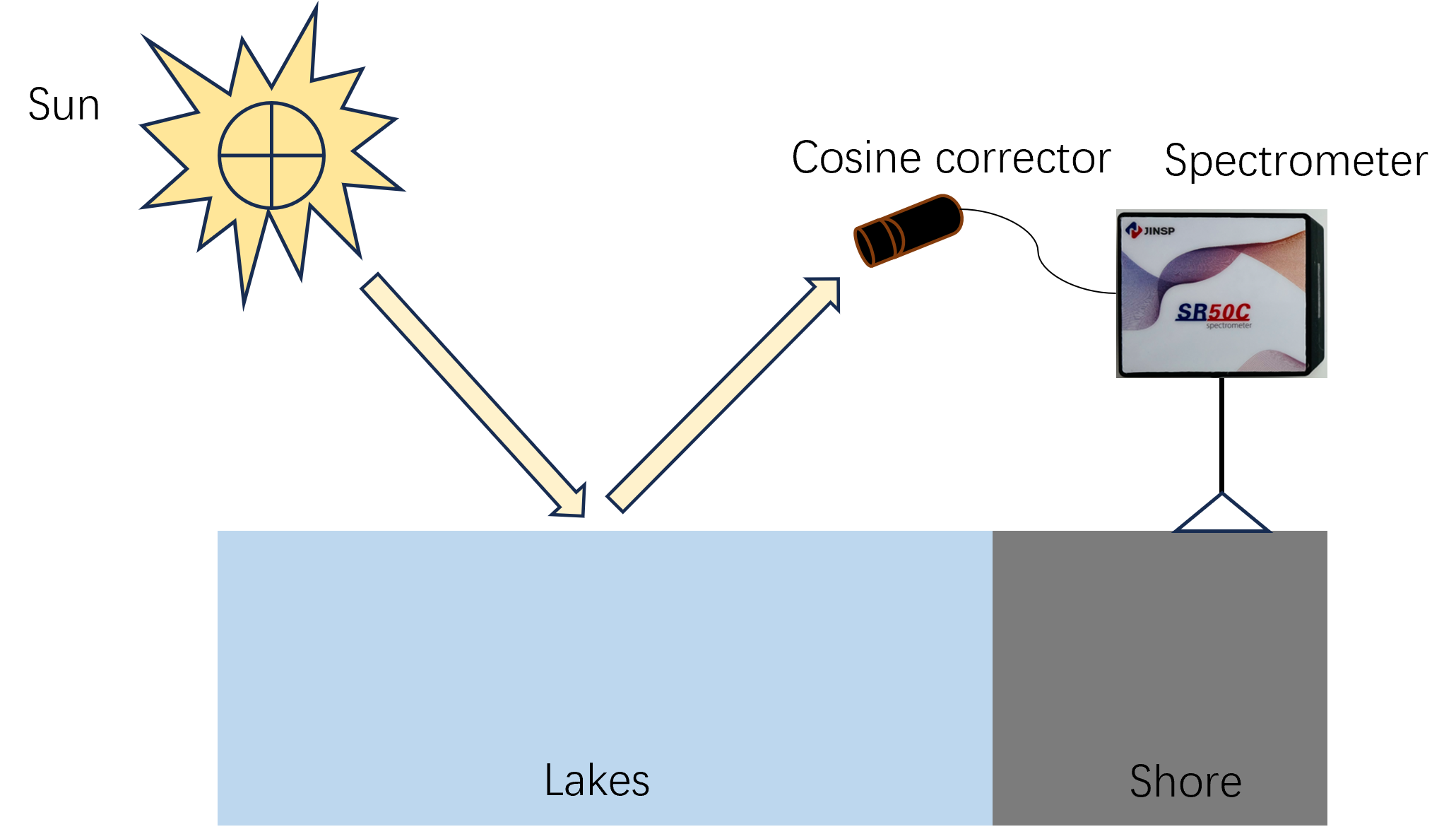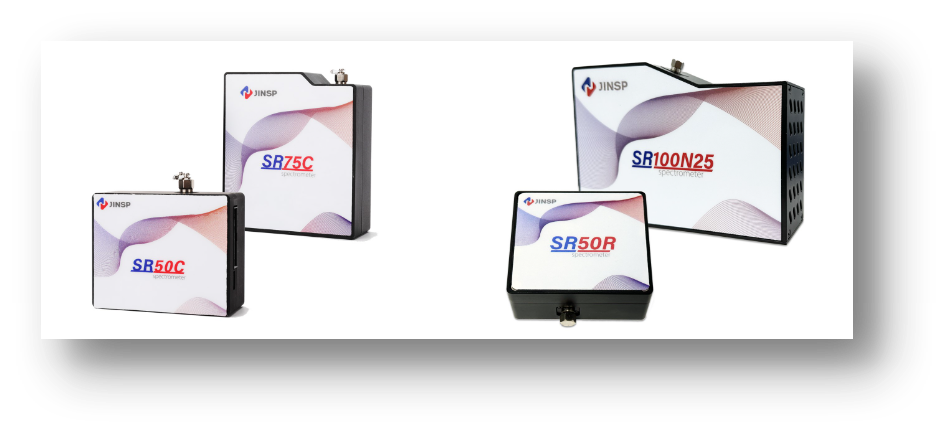The primary mechanism for using spectral technology to monitor water environment quality is that polluted water bodies have spectral characteristics that distinguish them from clean water bodies. These spectral characteristics are reflected in their absorption or reflection of light at specific wavelengths, and these spectral features can be captured by field spectrometers and reflected in the spectral data. For example, when a water body experiences eutrophication, chlorophyll in phytoplankton exhibits a significant "steep slope effect" in the near-infrared band, thus such water bodies have spectral characteristics of both water and vegetation, showing low reflectance in the visible band but significantly higher reflectance in the near-infrared band. With the development of technology and the increasing demands for environmental protection, the types of water quality parameters that can be monitored are gradually increasing. The water quality data that can be monitored can roughly be divided into the following four categories: turbidity, chlorophyll content, phytoplankton, and dissolved organic matter. Choosing a field spectrometer with high precision, fast spectral testing speed, and accurate spectral data can meet the various requirements of water quality monitoring. In water environment monitoring, field spectrometers provide a scientific basis for water quality assessment, pollution source identification, and environmental monitoring by accurately measuring the spectral response characteristics of water bodies at different wavelengths.
1. Main Water Quality Parameters Monitoring Process
● Chlorophyll Content: Eutrophication level is an indicator of lake ecological management, with large-scale algae proliferation being the main cause of lake eutrophication. The absorption coefficient spectral characteristics of chlorophyll a show two absorption peaks, usually near 440 nm and 675 nm. Since the 675 nm region is less affected by other water body elements, the spectral characteristics around 675 nm are commonly used to inversely determine chlorophyll a concentration. The higher the chlorophyll content, the lower the spectral reflectance, especially around the 450 nm visible light band.
● Organic Matter and Suspended Solids: Inorganic matter, organic matter, sediment, and microorganisms suspended in water can anaerobically ferment after sedimentation, increasing the turbidity of the water body. In turbid water bodies with high suspended solids concentration, some components can weaken the spectral characteristics of algal plant reflectance. Different suspended matter compositions and concentrations can affect the water body's reflected spectrum differently. Spectral data in the 620-670 nm band range are typically chosen to inversely determine suspended solids concentration with higher accuracy.
● Heavy Metals and Other Pollutants: Although directly detecting the spectral characteristics of heavy metals and other pollutants may be complex, field spectrometers can indirectly infer heavy metal pollution by analyzing the spectral changes of other substances affected by heavy metals (such as complexes) in the water body.
2. Experimental Scheme
Water body reflection spectrum measurements are conducted at approximately 1 meter above the water surface, with the measurement direction almost perpendicular to the water surface. The instrument used is the Jianzhi SR50C field spectrometer, with a working wavelength range of 300—1100 nm. By measuring a standard cosine reflection plate, the water surface reflection intensity can be converted into reflectance. Compared to relative spectral reflection intensity curves, water surface spectral reflectance curves can more clearly reflect the spectral characteristics of algae chlorophyll, organic matter, and suspended solids. At all sampling points, the water bodies were quite turbid, and the bottom was not visible, so the influence of bottom reflection did not need to be considered. At least three reflection spectrum measurements were conducted at each sampling point.

3. Product Recommendation
Beijing Jianzhi Technology's mini fiber optic spectrometer serves as the core component for acquiring spectral characteristic information of field objects, reflecting material composition, structure, state, and other characteristics through these spectral information. It is suitable for and covers the visible to near-infrared wavelength range of 400-2500 nm required for field spectroscopy. It is compact, easy to connect, provides an SDK, and can be integrated into customers' large-scale testing equipment. Customization for different wavelength ranges is acceptable. For more details, please visit: Fiber Optic Spectrometers - JINSP Company Limited (jinsptech.com)

Post time: Aug-01-2024

